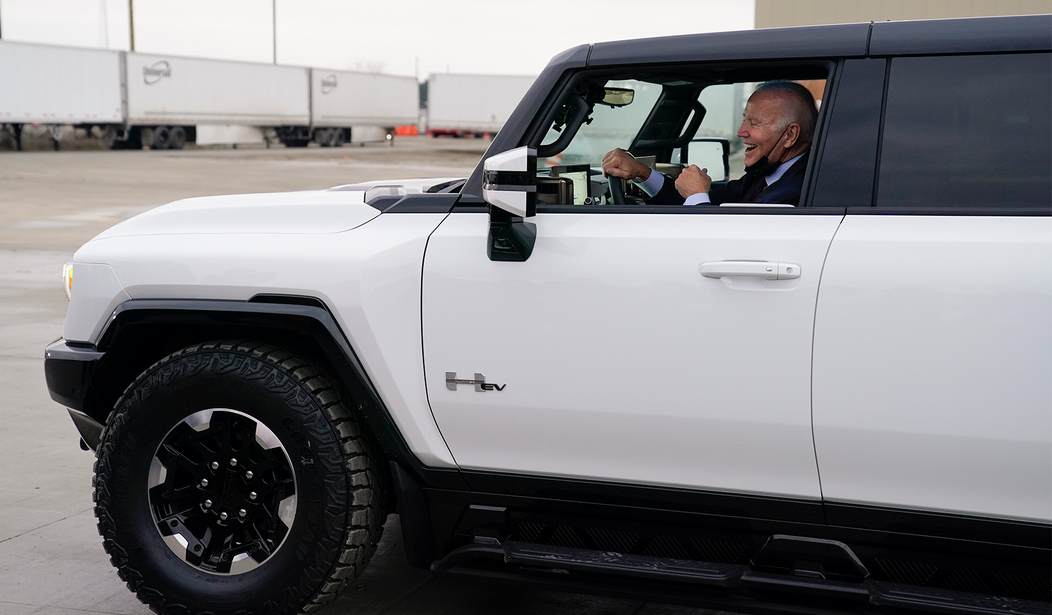Top News
Not One of the Promised EV Chargers Has Been Built

Build Back Better is a bust.
We all know that. Nothing gets built, and nothing gets better.
‘Congress provided $7.5B for electric vehicle chargers. Built so far: Zero.’ ‘Two years later, the program has yet to install a single charger.’ From @politico https://t.co/0PY4VNcjbO
— Byron York (@ByronYork) December 5, 2023
Still, you would think that if the Biden Administration decided something was a priority, like getting Americans out of internal combustion engine cars and into EVs, some movement toward that goal would have been made.
You would be wrong.
The true purpose of the “Inflation Reduction Act” was to pass the Green New Deal under another name, and one of the key claims being made by environmentalists is that the phase-out of the ICE is vital to reducing greenhouse gases. That’s the ostensible reason for so much money being put into EV technology, including the $7.5 billion set aside to install EV chargers.
Sprinkling EV chargers across America is supposed to reduce range anxiety, a key factor holding back EV sales. Refueling infrastructure for ICE vehicles is in great shape–to call the market mature is an understatement. It’s easy to gas up your car in 5 minutes and drive another 300-500 miles without worry.
Not so with EVs, although Tesla has done a good job providing charging technology for their cars in the areas of the country where people are most likely to use their products.
The investment in EV chargers was supposed to change that. But as with all things Biden, the rhetoric and reality couldn’t be much farther from each other. Not a single EV charger has yet to be installed.
“It has been frustrating to say the least,” Arcady Sosinov, founder and CEO of charging manufacturer FreeWire Technologies, said of the slow pace of the rollout.
Biden signed the bipartisan infrastructure package into law in 2021 with $7.5 billion specifically directed toward EV chargers, with an eye toward achieving his goal of building 500,000 chargers in the United States by 2030.
The United States has around 180,000 chargers today, according to the Energy Department. That includes 41,000 of the type of fast chargers that can alleviate the dreaded “range anxiety” of a long-distance road trip in an electric vehicle.
In a June study, the National Renewable Energy Laboratory projected the U.S. will need 1.2 million public chargers by 2030 to meet charging demand, including 182,000 fast chargers.
Administration officials insist the pace at which they are rolling out the infrastructure law’s charging funds is to be expected, given the difficulty of creating a brand-new program in every state and marshaling the private sector to meet complex reliability and performance requirements for each federally-funded station.
Beege has been following the disaster that is Biden’s EV policy, so I won’t get into the weeds on how counterproductive it has been. It is a classic case of bureaucrats acting on their belief that writing rules, passing laws, and spending money somehow can substitute for market demand, engineering know-how, and entrepreneurialism.
All you need to know is that Joe Biden’s favorite EV is the GMC Hummer, which in two years has sold fewer than 500 cars.
Unlike some conservatives, I don’t think there is anything wrong with the concept of electric cars. There is a good use case for them, and as a second car, I think one would be excellent to have and a lot of fun to drive.
That’s why there is a market for them, just like motorcycles, bicycles, and golf carts—different vehicles for different needs.
So let the market decide how many get built, where the chargers go, and when to build them.
As it is the government has proven they haven’t a clue about any of these things. They can’t even install a single charger with $7.5 billion to do so.
Read the full article here


















